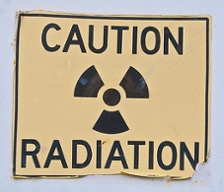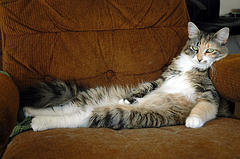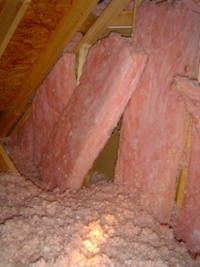There’s Radiation in Your Home! – And Building Science Can Help

 As you sit comfortably in your home, you’re being bombarded by radiation from all sides. There’s nothing you can do to stop it either. Don’t worry, though—without it, you’d be dead because your house would be at a temperature of absolute zero. (But that’s impossible according to the third law of thermodynamics, so maybe you wouldn’t be dead after all.)
As you sit comfortably in your home, you’re being bombarded by radiation from all sides. There’s nothing you can do to stop it either. Don’t worry, though—without it, you’d be dead because your house would be at a temperature of absolute zero. (But that’s impossible according to the third law of thermodynamics, so maybe you wouldn’t be dead after all.)
As you sit comfortably in your home, you’re being bombarded by radiation from all sides. There’s nothing you can do to stop it either. Don’t worry, though—without it, you’d be dead because your house would be at a temperature of absolute zero. (But that’s impossible according to the third law of thermodynamics, so maybe you wouldn’t be dead after all.)
The radiation I’m talking about is electromagnetic (EM) radiation. Vibrating electric and magnetic fields compose it, and the various forms of it comprise* light, microwaves, infrared, radio waves, x-rays, and other forms.
Every object in your home radiates this EM radiation at a wavelength corresponding to the temperature of the object. Really hot objects, like a light bulb filament, will produce EM radiation in the form of light. (Well, about 10% of a light bulb’s radiation is light anyway.) Most of the objects in our home, though, produce radiation in the infrared range. In fact, you yourself are radiating infrared waves to everything around you.
The human body likes to operate at about 98.6° F, but we’re constantly generating excess heat that we have to get rid of. Generally, we do this through radiation, convection, and perspiration. The body is extremely precise at maintaining this temperature and adjusting the mechanisms of heat loss to match the surroundings as well as your activity and metabolism levels.
As you sit in your recliner, radiating away excess heat, you’re also absorbing heat from the objects radiating around you. The important quantity here is the net radiant energy that you emit to or absorb from your surroundings. If the walls, ceiling, and floor around you are all at 98.6° F, your net radiation of heat will be zero. Which means you’re gonna be hot! A fan will move the air around you, and that will help by removing heat through convection. With your surroundings so warm, however, you’re still going to be uncomfortable and likely to sweat unless you crank the the air conditioner thermostat way down.
radiating away excess heat, you’re also absorbing heat from the objects radiating around you. The important quantity here is the net radiant energy that you emit to or absorb from your surroundings. If the walls, ceiling, and floor around you are all at 98.6° F, your net radiation of heat will be zero. Which means you’re gonna be hot! A fan will move the air around you, and that will help by removing heat through convection. With your surroundings so warm, however, you’re still going to be uncomfortable and likely to sweat unless you crank the the air conditioner thermostat way down.
In a properly functioning house, your walls, ceiling, and floor will be close to the indoor air temperature. The net radiation in that case will help you keep cool because you’ll be sending out more than you’re receiving. To attain that level of comfort, you have to make sure that your building envelope (the boundary between conditioned and unconditioned space) is insulated and airsealed properly.
One common feature that keeps houses uncomfortable is an attic kneewall, a wall that separates attic space from conditioned space. Bonus rooms usually have some attic kneewalls, and so do some other upper floor rooms as well as parts of rooms with vaulted ceilings. If the kneewall is insulated with fiberglass batts or cellulose, there should also be an air barrier on the attic side of the insulation. After the insulation is installed, it should be covered with drywall (yes, in the attic), rigid foam, or another rigid air barrier material. Then it should be sealed with joint compound, caulk, or foam at all seams and joints.
 Without the air barrier, what can happen is that the insulation (especially fiberglass) can pull away from the drywall on the interior side (photo, left), allowing attic air to get up against the interior surface. In summer, that 130° F air can significantly increase the radiant temperature of the wall and make the room uncomfortable no matter how well your air conditioning system works. In winter, the wall stays cold, and again, the room will be harder to make comfortable.
Without the air barrier, what can happen is that the insulation (especially fiberglass) can pull away from the drywall on the interior side (photo, left), allowing attic air to get up against the interior surface. In summer, that 130° F air can significantly increase the radiant temperature of the wall and make the room uncomfortable no matter how well your air conditioning system works. In winter, the wall stays cold, and again, the room will be harder to make comfortable.
If your home’s air temperature seems to be OK, but certain rooms still feel uncomfortable, you may have a problem with radiation. Remember, human comfort is determined by four factors: temperature, air movement, humidity, and radiation.
*OK, either you think I’m clever for using the word ‘comprise’ correctly while at the same time contrasting it with its friend, ‘compose,’ the word people mean to say when they write the horrid ‘is comprised of’ phrase, or you think I’m an arrogant jerk for not only foisting such sanctimony on readers who came here to learn about building science but also having the gall to point it out here. So, thank you, or I’m sorry, depending on which camp you fall in.
Photo at top by Nomad Tales from flickr.com, used under a Creative Commons license. Photo of cat in recliner by gillicious from flickr.com, used under a Creative Commons license.
This Post Has 8 Comments
Comments are closed.

Actually, I believe the
Actually, I believe the second law of thermodynamics guarantees my ultimate demise, so I’m pretty much hosed either way! 🙂
Allison, you said that the
Allison, you said that the air barrier should be on the attic side of the knee-wall insulation, but like any air barrier+insulation composition, doesn’t my climatic region actually dictate which side? Agreed that, in any case, there is a need for rigidity on the attic side to hold batts or cellulose in place.
I wanted to compose a worthy
I wanted to compose a worthy response to you, but must take a moment to compose myself. Or perhaps you are just confused as to what comprises a pithy response.
I was hoping Allison was
I was hoping Allison was impressed by my use of the term “composition”. I was going to say “comprisation”, but wasn’t sure if I should spell it with an ‘S’ or a ‘Z’ 😛
Where you put the air barrier
Where you put the air barrier in the attic does indeed depend on where the home is located. You want to locate the air barrier so that the condensation that forms during the longest season does so on the side of the air barrier away from the insulation. You don’t want wet insulation.
Condensation occurs where warm, moist air hits a cold surface. In cold climates, that will occur on the inside surface, so you want to locate the air barrier inside.
In warm climates, condensation will occur on the outside surface (where warm attic air hits an air barrier cooled by A/C). So, you locate the air barrier on the outside side of the insulation.
Looks like somebody is
Looks like somebody is responding to the wrong blog…(sex in the city talk)…
Anyway, Allison I understand the science behind it, however in temperature climates where there a vey hot summers and very cold winters, what do you suggest? Also, what about using other types of insulation for the attic. For instance a someone wants to make the attic (most of it) a usable conditioned space. However, they have an air handler in the attic, yes we could knee wall that area- but about insulating it, and there is no ducts in the attic for heat or air, (there is a walk up attic stairs with a door at the bottom of the steps). How about radiant barriers like reflectant and/or spray foam? I understand the fiberglass is less expensive, but how about a combination of different types of insulation and reflective materials?
eewww, I just read my post
eewww, I just read my post and I can’t believe how many errors in spelling and grammar I made. I apologize, since I just woke up and should always have a cup of java before trying to wrtite anything that makes sense or I may compromise my integrity.
John P.:
John P.: It’s not just your demise. The second law guarantees that if the universe doesn’t end with a Big Crunch, which it will if there’s enough mass, then it’ll die a heat death. Regarding which side to put an air barrier on, I think you’re confusing it with vapor barrier/retarder. Insulation in walls should be fully encapsulated with air barriers on all 6 sides.
Alexandra: Yes, I am confused.
Joel: Whether you get condensation or not depends on temperature and dew point of the air in contact with a surface. In warm climates, the humidity is outside, but you’ll only get condensation outside if the humid air finds a surface below the dew point. If you’ve got good air barriers to keep cool, indoor air out of the wall cavities, you won’t have condensation.
Debra: Regarding your question about the best way to handle the problem of radiant heat, the answer is just to pay attention to the building envelope details. Ideally, you should put the insulation on the outside, in a Perfect Wall configuration. Make sure air doesn’t get into the building assemblies, and install the insulation the way it’s supposed to be installed. The problem is that builders miss some of the details, like attic-side sheathing on kneewalls, and problems result. (Sorry about the spam comments. I’ve deleted them.) Hope you’re all coffeed up now!